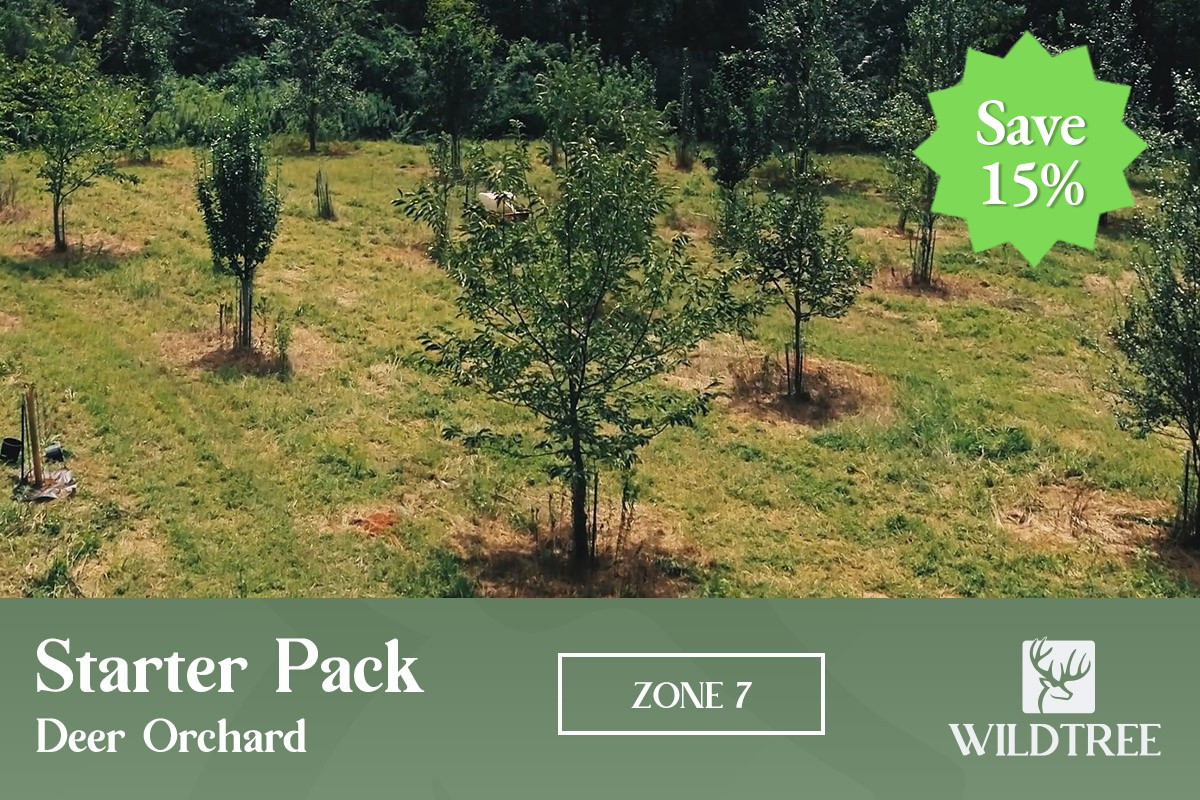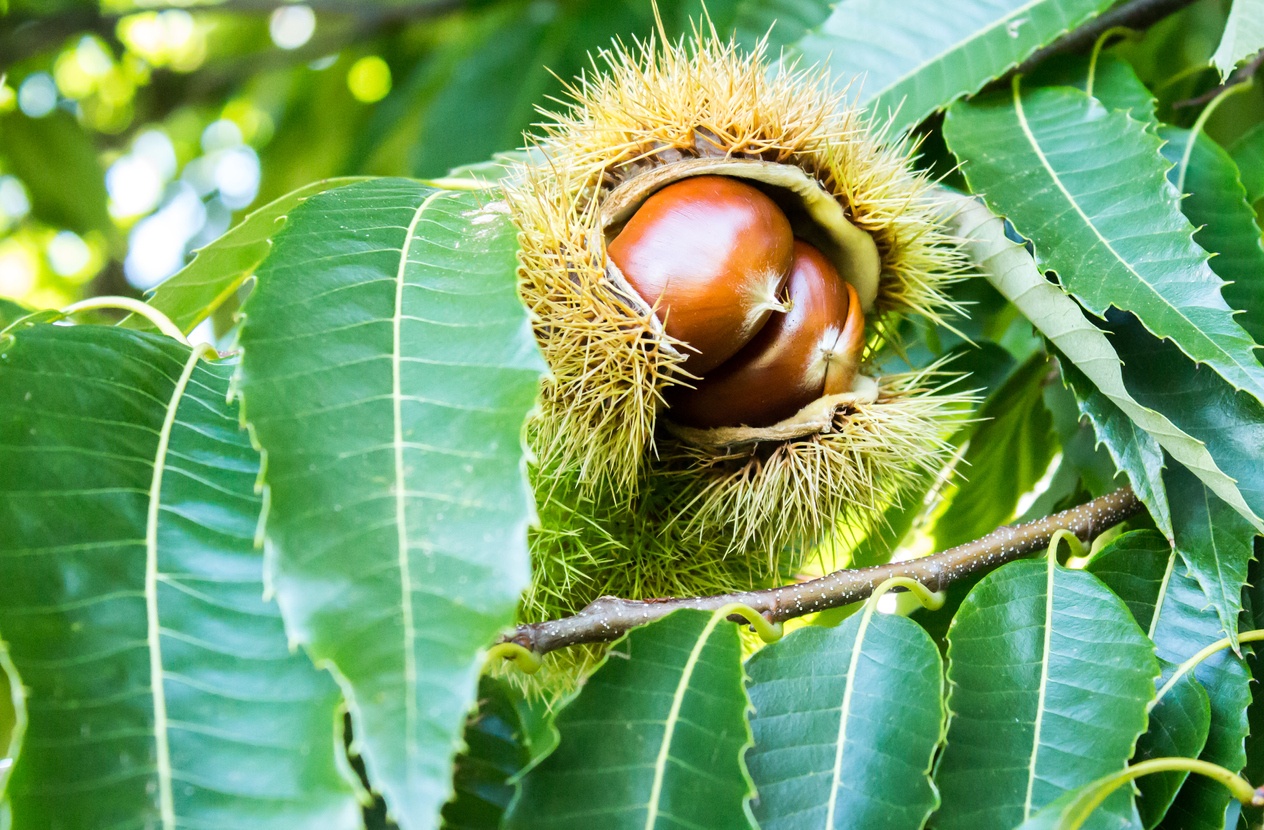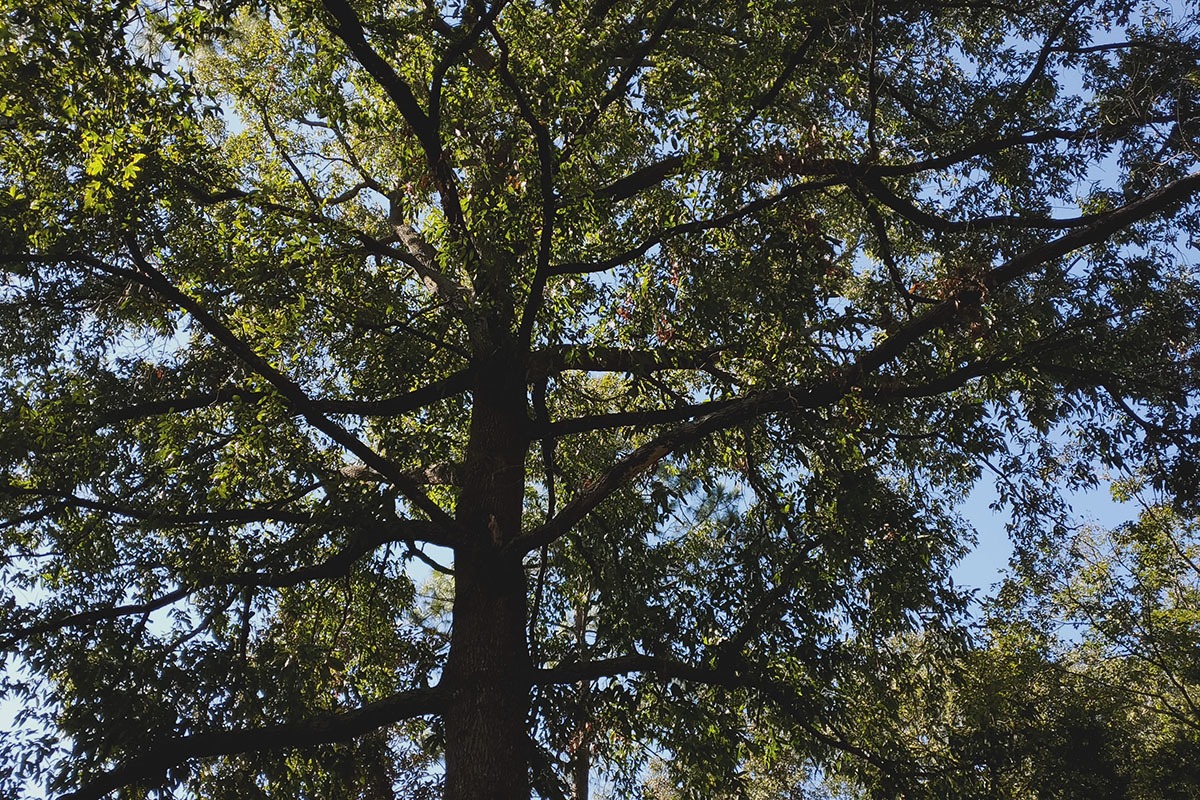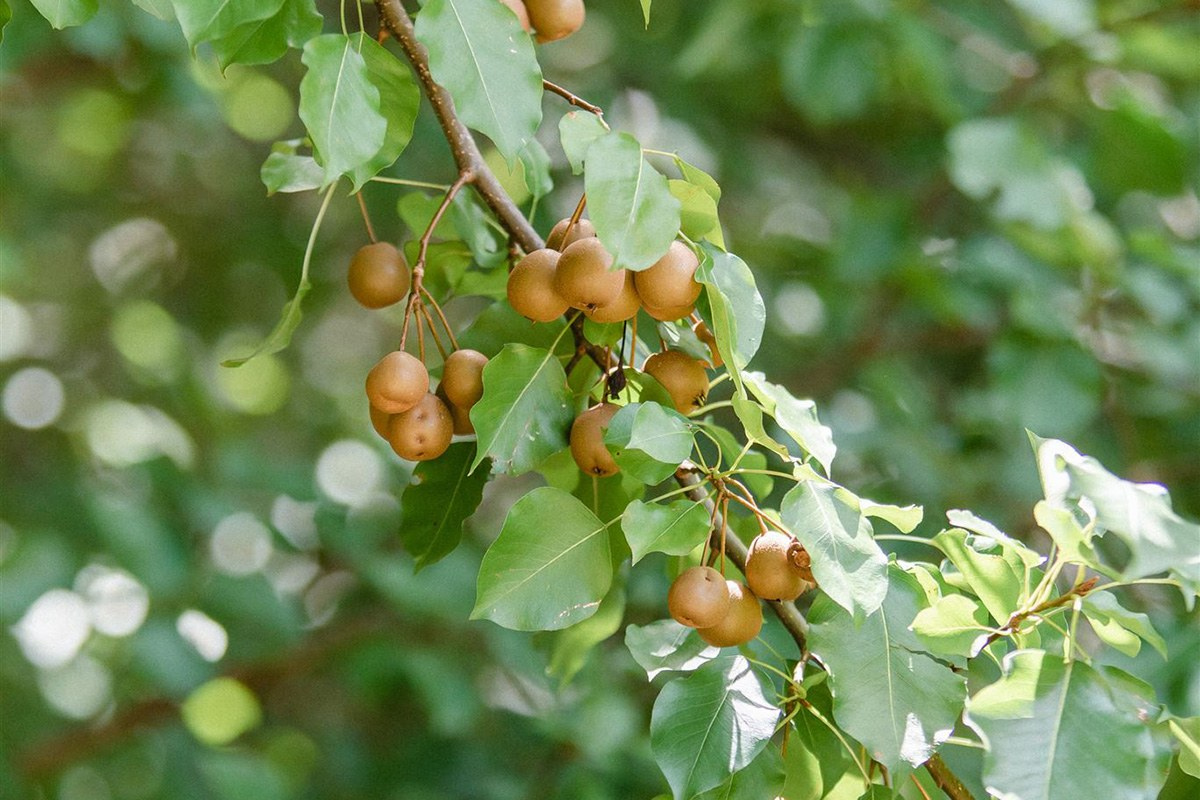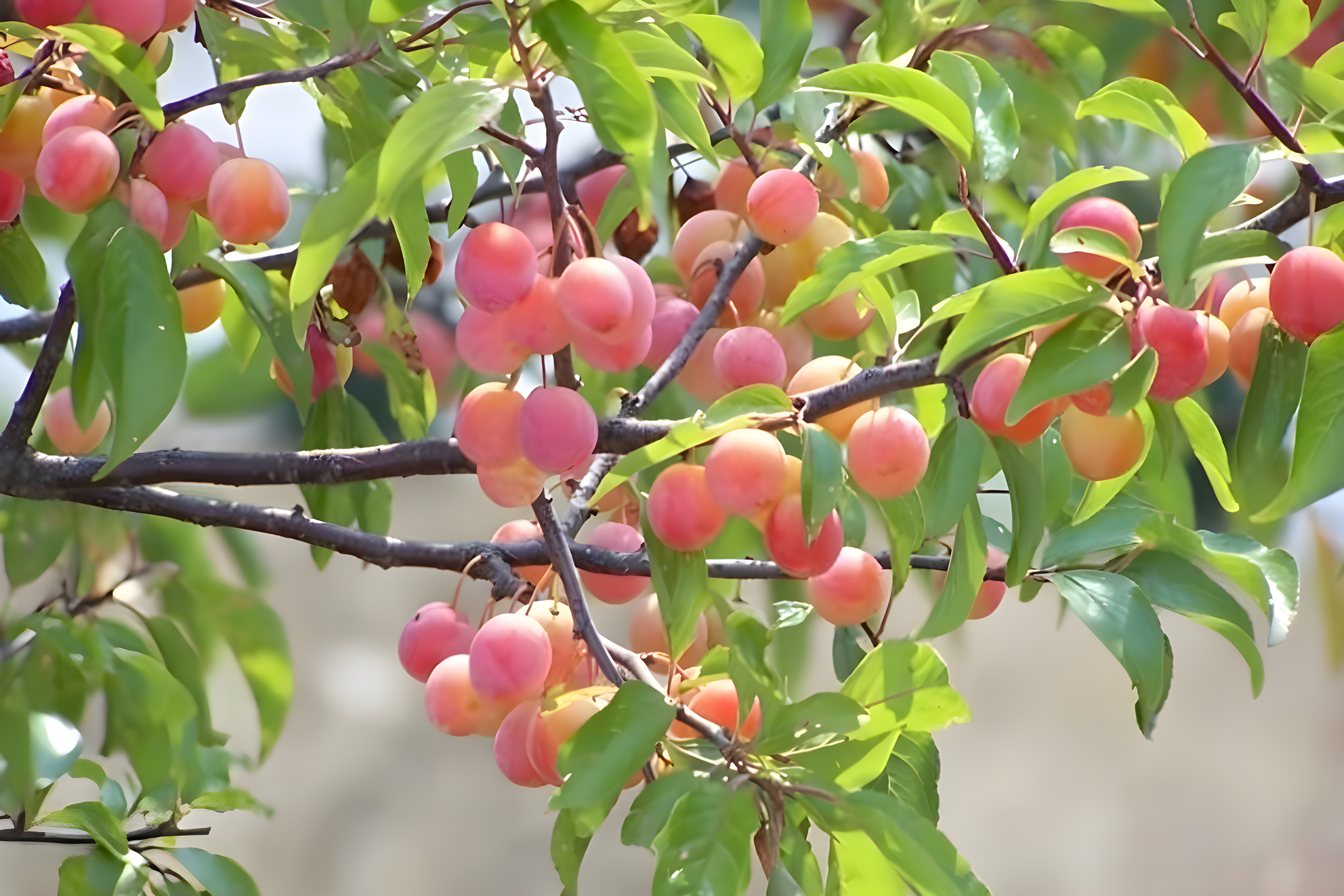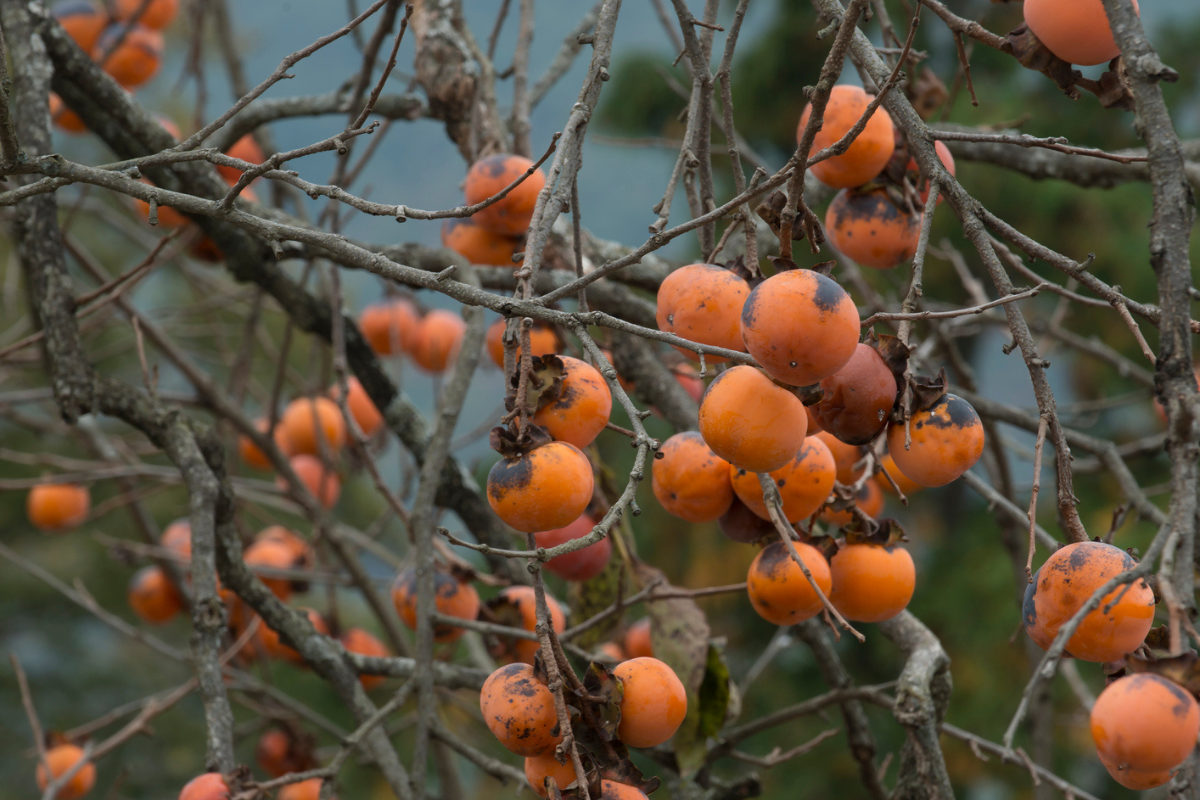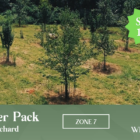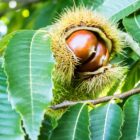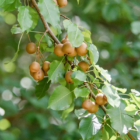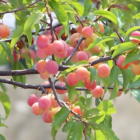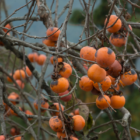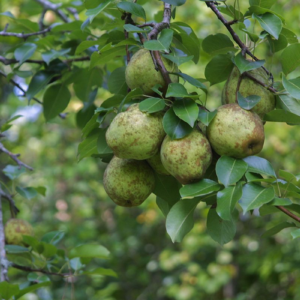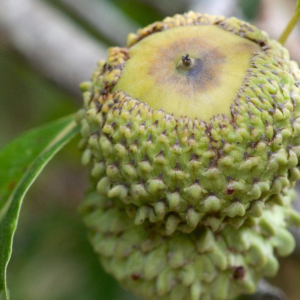Description
How to Plant Your Deer Orchard
Included in this starter package:
Not only do deer love Chinese chestnuts, but you will find them tasty as well. They can be eaten roasted, boiled, or sautéed. A prickly 2–3½” seed husk encloses 1-4 nuts and will yield a ripened nut crop from mid to late September all the way through October.
This stately deciduous Asian oak with long, jagged-edged glossy leaves produces substantial crops of acorns at an earlier age which drop earlier in the fall as well. These traits make it a must-have throughout its range for wildlife managers. Acorn production becomes heavier and more reliable with age. This prolific producer requires well-drained growing conditions that tend to be acidic to neutral, and not recommended for alkaline soil or poorly-drained sites.
A very special selection that will be of great interest for wildlife food plots due to its later-than-typical fruiting. Discovered and trialed by Dr. James Kroll (aka “Dr. Deer”) from Stephen F. Austin State University it is invaluable for providing late fall fruit when little else is available. Large clusters of small fruit characterize this selection. Self-fertile but increased fruit set is likely with the presence of another pear cultivar nearby, and can be combined with our other earlier-fruiting selections to have a long season of fruit availability.
Native to much of the eastern US, these shrubby plums will, over time, form ever-expanding thickets of multiple stems arising from the spreading root system, providing valuable cover for a variety of wildlife. Once established, it is very drought tolerant. Masses of white flowers cover the canopy just before the leaves appear in spring. Deer will browse on the foliage throughout the season, and the early summer plums, about the size of a large grape, are highly relished. Naturally found on sandy, well-drained soil in full sun, it prefers acidic to neutral pH and not a good choice for alkaline conditions. This species is not reliably self-fertile so one or more individuals planted near each other will increase the chances of pollination and therefore fruit set.
A wide-ranging tree that is adaptable to a diverse array of habitats, from the baking hot, dry limestone “Hill Country” of central Texas to moist floodplain margins in central Florida, while also enduring the cold winters in the northern extent of its range from Iowa to southern New England. Over time it will produce shoots from the roots, forming a colony of trunks that provide valuable cover for wildlife. The orange fruit which can range up to the size of a small plum, begin ripening in fall and are often retained on the tree after leaf drop well into December in southern latitudes. Note that this species has separate male and female plants, so to ensure fruit production multiple plants of our unsexed saplings should be sited near each other to increase the chances that both sexes will be present.

